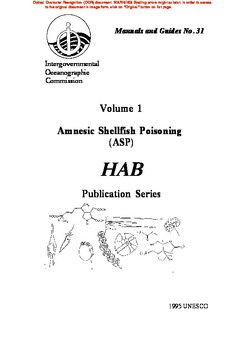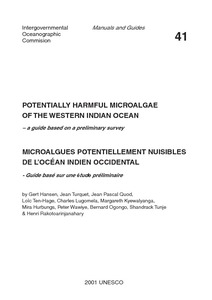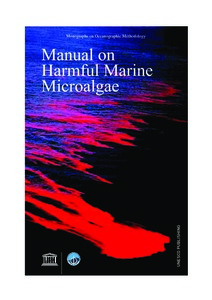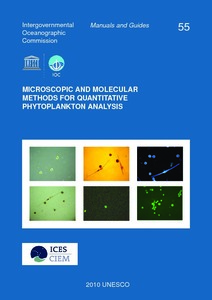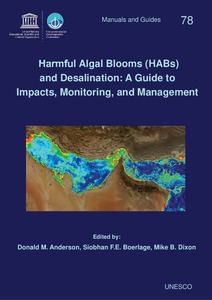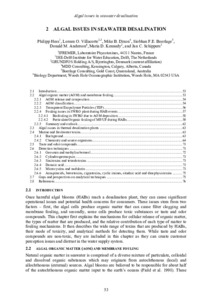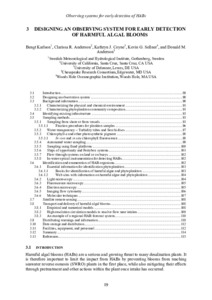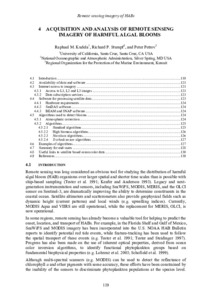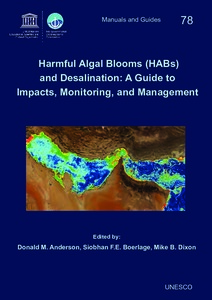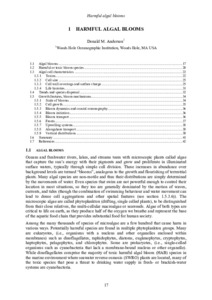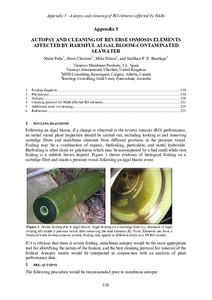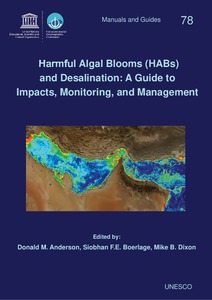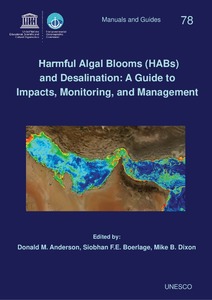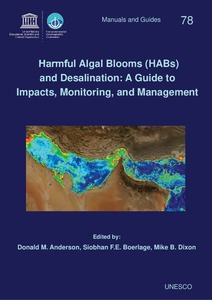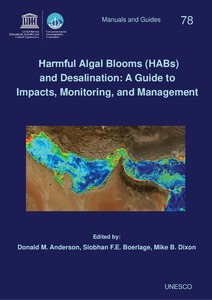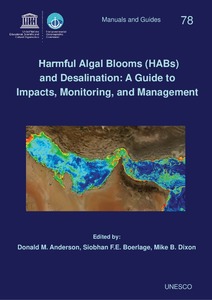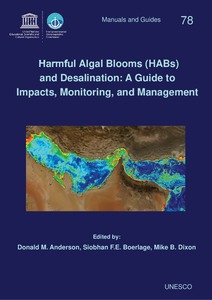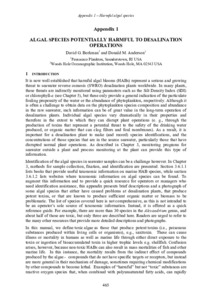Browsing HAB by Issue Date
Now showing items 1-20 of 28
-
HAB Publication Series Volume 1. Amnesic Shellfish Poisoning (ASP).
(UNESCO for IODE, Paris, France, 1995)In this manual a review is provided of the chemical and toxicological aspects of Amnesic Shellfish Poisoning (ASP). The document contains information on chemical structure, chemical data, where to obtain standards and ... -
Potentially harmful microalgae of the western Indian Ocean: a guide based on a preliminary survey.
(UNESCO-IOC, Paris, France, 2001) -
Manual on Harmful Marine Microalgae. 2nd revised edition.
(UNESCO, Paris, France, 2004)Following a general introduction on harmful algal blooms, the Manual proper is composed of four parts: Methods, Taxonomy, Monitoring and Management, and Appendices. The Methods section covers oceanographic field-sampling ... -
Real-time Coastal Observing Systems for Marine Ecosystem Dynamics and Harmful Algal Blooms: theory, instrumentation and modelling.
(Unesco, Paris, France, 2008)The proliferation of harmful phytoplankton in marine ecosystems can cause massive fish kills, contaminate seafood with toxins, impact local and regional economies and dramatically affect ecological balance. Real-time ... -
Microscopic and molecular methods for quantitative phytoplankton analysis.
(UNESCO, Paris, France, 2010)A new manual on microscopic and molecular methods for quantitative phytoplankton analysis is available from the IOC in cooperation with ICES. The manual includes illustrated step by step instructions on how to carry out ... -
Guide for designing and implementing a plan to monitor toxin-producing microalgae. 2nd Edition.
(Unesco & IAEA, Paris, France & Vienna, Austria, 2016)The first edition of this manual was first published in 2011 in Spanish. Pigmented phytoplankton is the main primary producer and constitutes the foundation of the marine food webs. Blooms, the explosive growth of ... -
Case histories for Harmful Algal Blooms in desalination.
(Intergovernmental Oceanographic Commission of UNESCO, Paris, France, 2017)Algae have long been an issue impacting desalination plant operation in areas prone to algal blooms or where macroalgae (seaweeds) and detritus became dislodged from the seabed. Previously and still today, operators and ... -
Algal issues in seawater desalination.
(Intergovernmental Oceanographic Commission of UNESCO, Paris, France, 2017)Once harmful algal blooms (HABs) reach a desalination plant, they can cause significant operational issues and potential health concerns for consumers. These issues stem from two factors – first, the algal cells produce ... -
Designing an observing system for early detection of harmful algal blooms.
(Intergovernmental Oceanographic Commission of UNESCO, Paris, France, 2017)Harmful algal blooms (HABs) are a serious and growing threat to many desalination plants. It is therefore important to limit the impact from HABs by preventing blooms from reaching seawater reverse osmosis (SWRO) plants ... -
Acquisition and analysis of remote sensing imagery of harmful algal blooms.
(Intergovernmental Oceanographic Commission of UNESCO, Paris, France, 2017)Remote sensing was long considered an obvious tool for studying the distribution of harmful algal bloom (HAB) organisms over larger spatial and shorter time scales than is possible with ship-based sampling (Tester et al. ... -
Harmful Algal Blooms (HABs) and Desalination: a Guide to Impacts, Monitoring and Management.
(Intergovernmental Oceanographic Commission of UNESCO,, Paris, France, 2017)Arid countries throughout the world are heavily reliant on seawater desalination for their supply of drinking and municipal water. The desalination industry is large and rapidly growing, approaching more than 20,000 ... -
Harmful algal blooms.
(Intergovernmental Oceanographic Commission of UNESCO, Paris, France, 2017)Harmful algal blooms are increasing in frequency and magnitude in many parts of the world, and one of the sectors of society that is being increasingly affected is the desalination industry. Given trends in the development ... -
Appendix 5. Autopsy and cleaning of reverse osmosis elements affected by harmful algal bloom-contaminated seawater.
(Intergovernmental Oceanographic Commission of UNESCO, Paris, France, 2017)Following an algal bloom, if a change is observed in the reverse osmosis (RO) performance, an initial visual plant inspection should be carried out, including looking at and removing cartridge filters and membrane elements ... -
Seawater intake considerations to mitigate HAB impacts.
(Intergovernmental Oceanographic Commission of UNESCO, Paris, France, 2017)Seawater intakes are a key element in the design, construction and success of desalination plants. Various intake options exist and are generally classified based on their abstraction depth. Surface ocean intakes abstract ... -
Bloom prevention and control.
(Intergovernmental Oceanographic Commission of UNESCO, Paris, France, 2017)Harmful algal blooms (HABs) are a serious and growing problem to many sectors of society, including the desalination industry. The many problems that HABs present for seawater reverse osmosis (SWRO) desalination plants ... -
Algal biomass pretreatment in Seawater Reverse Osmosis.
(Intergovernmental Oceanographic Commission of UNESCO, Paris, France, 2017)Harmful algal blooms (HABs) can result in a substantial increase in the organic and solids load in the seawater feed to be treated at a desalination plant. In this chapter, the removal of this material is addressed in ... -
Harmful agal bloom-related water quality monitoring for desalination design and operation.
(Intergovernmental Oceanographic Commission of UNESCO, Paris, France, 2017)Characterization of the raw seawater at plant intakes and monitoring to detect poor water quality events including harmful algal blooms (HABs) is critical throughout the lifetime of a desalination plant. HABs can result ... -
World Health Organization and International Guidelines for toxin control, Harmful Algal Boom management, and response planning.
(Intergovernmental Oceanographic Commission of UNESCO, Paris, France, 2017)Drinking water guidelines are designed to protect public health and the safety of drinking water supplies by suggesting safe levels for constituents that are known to be hazardous to health. The World Health Organization ... -
Removal of algal toxins and taste and odor compounds during desalination.
(Intergovernmental Oceanographic Commission of UNESCO, Paris, France, 2017)A major challenge in desalination is the removal of harmful algal bloom (HAB) toxins and taste and odor compounds (hereafter referred to as algal metabolites) using common treatment techniques. Removal of other compounds ... -
Appendix 1. Algal species potentially harmful to desalinitation operations.
(Intergovernmental Oceanographic Commission of UNESCO, Paris, France, 2017)It is now well established that harmful algal blooms (HABs) represent a serious and growing threat to seawater reverse osmosis (SWRO) desalination plants worldwide. In many plants, these threats are indirectly monitored ...
 Repository of community practices in Ocean Research, Applications and Data/Information Management
Repository of community practices in Ocean Research, Applications and Data/Information Management
